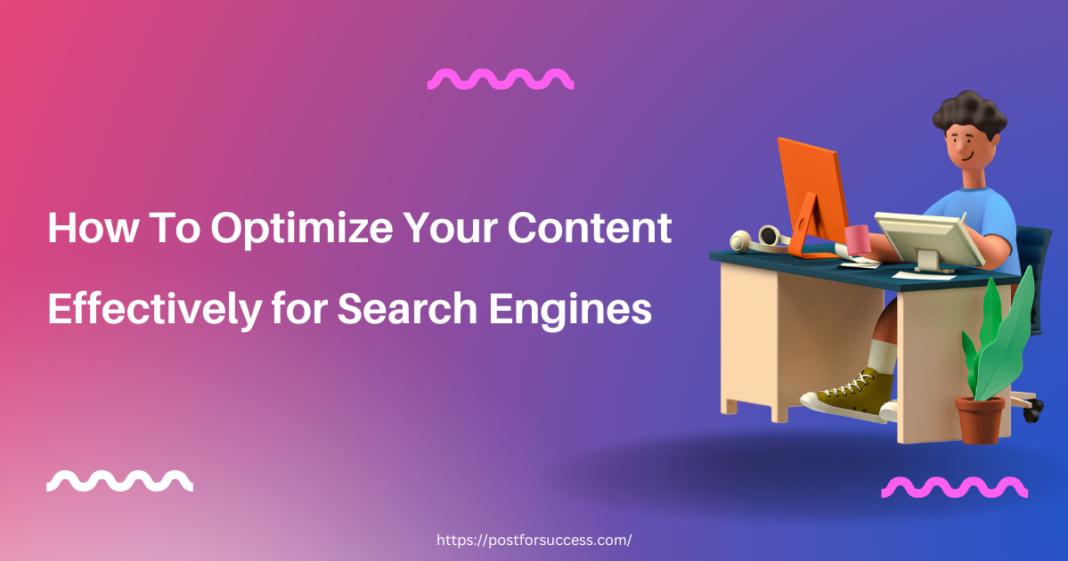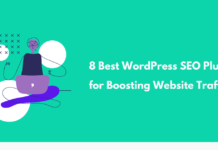Search engine-optimized content is the key to any sort of success in the online world. Experts say that around 68% of all online experiences are kick-started by a simple search. That is because whenever people are looking for information, products, motivation, etc., they go to Google and sometimes Bing.
That is why the importance of search engine visibility is quite high for all types of businesses. And for that to happen, it is important to optimize content efficiently. Only then does it have a chance of appearing in the first few results of SERP.
So, how do you optimize your content effectively so that it’s indexed properly and appears in organic searches? And how do you implement these strategies? Let us find out.
1: Conducting Keyword Research

The first thing you will need to optimize your content is keywords. These keywords dictate whether Google’s crawlers index your content and then appear in search results. However, there are two main types of keywords, such as:
- High-volume keywords.
- And long-tail keywords.
Now, there are many other types of keywords too, but these two are important for a reason. High-volume keywords are the type that people search for most, such as “fixing a bug” with a PC or a mobile phone.
Whereas long-tail keywords are a sign of a customer/buyer, who is close to making a purchase, such as “the best LED computer screen 2023.” As you can see, one has the intent of an issue, and the other has the intent of a product.
Now, after researching these keywords, it is important to use them properly too. That means using them responsibly throughout the content so that it is not keyword stuffing. And it is also important to ensure a certain keyword density (1-2%).
Thus, the first step of any sort of optimization begins with keyword research, inclusion, and optimization.
2:Creating High-Quality, Engaging Content

Now this is the most important part of any optimization for search engines—you need to create high-quality, engaging, and original content. That means the content needs to be of the highest quality possible. But how do you define high-quality content?
There are a few certain traits of high-quality content, such as:
- It focuses on information more than words.
- It is actionable rather than theoretical.
- It is unique, original, and provides citations.
- It is easily readable and understandable.
- And it flows smoothly.
This means the content should meet specific criteria. It should have informative value while giving readers the ability to take some action upon it. Then, it needs to be rid of any sort of plagiarism or duplicity.
That is why it is important to check for plagiarism before posting content. After that, writers can paraphrase the duplicate or potentially plagiarized text and cite the source detected by the plagiarism-checking tool.
Then, to make it more readable, it is important to ensure that it uses simple and non-technical words. And also, it is important to guarantee that the sentences are around 10-15 words and that paragraphs do not exceed 3-4 lines.
3: Crafting Compelling Meta Tags
Compelling meta tags are important for better search engine visibility. Meta tags are those little snippets of text hiding behind the scenes, they may seem insignificant, but they hold tremendous power. Now, you might be wondering why that is.
Because search engines gobble them up like candy. When you write concise and keyword-rich meta tags, you are sending out signals to search engines, telling them what your content is all about. These tags function as a roadmap, guiding web crawlers and helping your blog climb higher in search rankings.
So, here is what you need to do to attract search engine crawlers:
- Keyword Research: Find popular and relevant keywords to include in your meta tags.
- Concise Descriptions: Craft short and compelling descriptions that accurately summarize your content.
- Unique Tags for Each Page: Create unique meta tags for every page to optimize visibility and avoid duplicate content issues.
By cleverly including relevant keywords, you will make it easier for search engines to understand and rank your blog. The more accurate and compelling your meta tags are, the more likely you will entice curious minds to click, boosting your blog’s visibility and driving organic traffic.
That is why it is especially important that you use proper meta tag-creating techniques. Therefore, meta tags not only help search engines understand and index your content, but they also attract users’ attention and entice them to click.
4:Structuring Content with On-Page SEO Techniques

It is essential that you structure content with on-page SEO techniques. These techniques show that your content is made according to SEO guidelines, and that is why it should be ranked higher. So, there are three main things you should focus on in on-page SEO:
- Using proper headers and headlines.
- Use the right keywords and their density (look at point one for more info).
- And perfecting other key essentials.
The first thing is about structure according to on-page SEO guidelines. That is why you should use H1, H2, and so on in your content. But what is more important is that you use keywords in the said H1s and H2s. Moreover, breaking your content like that will also make it more readable.
Then, you need to optimize your website/blog’s URL structure. Each blog you post must have a slug that indicates the keywords and intent of that article—it’s highly important as it helps search engine crawlers find relevant content.
Lastly, you must optimize internal linking and anchor text. Internal linking is when your content interconnects the text to other blog posts/pages on your website, thus improving your domain rating. Whereas anchor text is the main keyword where you backlink the relevant links.
These are only the basic and most elementary definitions of these key on-page SEO elements and techniques. That is why you should focus more on them and read them up before creating content of any kind.
Conclusion
These are the top four techniques that you need to optimize content for search engines. Focusing on these techniques will allow you to generate better results and rank higher in SERPs. However, for all that to happen, it is important that your content is original, plagiarism free, and offers outstanding informative value.
Also Read: Future OF SEO: Podcasts and Voice Search











